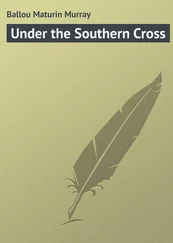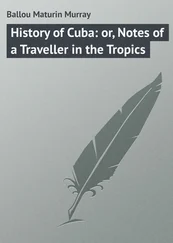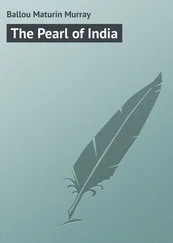Maturin Ballou - Due South - or, Cuba Past and Present
Здесь есть возможность читать онлайн «Maturin Ballou - Due South - or, Cuba Past and Present» — ознакомительный отрывок электронной книги совершенно бесплатно, а после прочтения отрывка купить полную версию. В некоторых случаях можно слушать аудио, скачать через торрент в формате fb2 и присутствует краткое содержание. ISBN: , Жанр: foreign_prose, на английском языке. Описание произведения, (предисловие) а так же отзывы посетителей доступны на портале библиотеки ЛибКат.
- Название:Due South: or, Cuba Past and Present
- Автор:
- Жанр:
- Год:неизвестен
- ISBN:http://www.gutenberg.org/ebooks/30130
- Рейтинг книги:4 / 5. Голосов: 1
-
Избранное:Добавить в избранное
- Отзывы:
-
Ваша оценка:
- 80
- 1
- 2
- 3
- 4
- 5
Due South: or, Cuba Past and Present: краткое содержание, описание и аннотация
Предлагаем к чтению аннотацию, описание, краткое содержание или предисловие (зависит от того, что написал сам автор книги «Due South: or, Cuba Past and Present»). Если вы не нашли необходимую информацию о книге — напишите в комментариях, мы постараемся отыскать её.
Due South: or, Cuba Past and Present — читать онлайн ознакомительный отрывок
Ниже представлен текст книги, разбитый по страницам. Система сохранения места последней прочитанной страницы, позволяет с удобством читать онлайн бесплатно книгу «Due South: or, Cuba Past and Present», без необходимости каждый раз заново искать на чём Вы остановились. Поставьте закладку, и сможете в любой момент перейти на страницу, на которой закончили чтение.
Интервал:
Закладка:
When the lonely lighthouse which marks Cape Maysi, at the easterly point of Cuba, hove in sight on the starboard bow, the dim form of the mountains of Hayti was also visible on the opposite horizon. A subterranean connection is believed to exist between the mountain ranges of the two islands.
When the outline of the Haytian mountains was in view, it was very natural to express a wish to visit the island at some convenient time. This led to some intelligent and interesting remarks from a compagnon de voyage, who had resided for two years at Port-au-Prince, the capital. "Unless you are compelled to land there," said he, "I advise you to avoid Hayti." He fully confirmed the reports of its barbarous condition, and declared it to be in a rapid decadence, as regarded every desirable element of civilization. In the country, a short distance from either Gonaives, Jacmel, or Port-au-Prince, where the mass of the negro population live, Voudou worship and cannibalism are quite common at the present time. The influence of the Voudou priests is so much feared by the government that the horrible practice is little interfered with. When the officials are forced to take cognizance of the crime, the lightest possible punishment is imposed upon the convicted parties. The island of San Domingo is about half the size of Cuba, Hayti occupying one third of the western portion, the rest of the territory belonging to the republic of San Domingo. "As to Port-au-Prince," said our informant, "it is the dirtiest place I have ever seen in any part of the world." Nevertheless, the historic interest clustering about the island is very great. It was the seat of the first Spanish colony founded in the New World. Its soil has been bathed in the blood of Europeans as well as of its aboriginal inhabitants. For three hundred years it was the arena of fierce struggles between the French, Spaniards, and English, passing alternately under the dominion of each of these powers, until finally, torn by insurrection and civil war, in 1804 it achieved its independence. The city of San Domingo, capital of the republic, is the oldest existing settlement by white men in the New World, having been founded in 1494 by Bartholomew Columbus. It contains to-day a little less than seven thousand inhabitants.
We gave Cape Maysi a wide berth, as a dangerous reef makes out from the land, eastward, for a mile or more. The fixed light at this point is a hundred and thirty feet above sea level, and is visible nearly twenty miles off shore.
We were running through the Windward Passage, as it was called by the early navigators, and whence one branch of the Gulf Stream finds its way northward. The Gulf Stream! Who can explain the mystery of its motive power; what keeps its tepid waters in a course of thousands of miles from mingling with the rest of the sea; whence does it come? The accepted theories are familiar enough, but we do not believe them. Maury says the Gulf of Mexico is its fountain, and its mouth is the Arctic Sea. The maps make the eastern shore of Cuba terminate as sharply as a needle's point, but it proved to be very blunt in reality, as it forms the gateway to the Caribbean Sea, where the irregular coast line runs due north and south for the distance of many leagues. It is a low, rocky shore for the most part, but rises gradually as it recedes inland, until it assumes the form of hills so lofty as to merit the designation of mountains.
There was on board of our ship an intelligent resident of Santiago, who was enthusiastic in his description of the plains and valleys lying beyond the hills which stood so prominently on the coast, – hills probably older than any tongue in which we could describe them. The Scriptural Garden of Eden has absolutely been placed here by supposition on the part of traveled people. The temperature is simply perfect, if we are to believe our informant; the vegetation is of a primitive delicacy and beauty unequaled elsewhere; the fruits are fabulously abundant and of the most perfect flavor; the water bubbles forth from springs of crystal purity, and the flora is so lovely as to inspire the most indifferent beholder with delight. "It is called the Garden of Cuba," said the American Consul of Cienfuegos, "but many go further, and declare it to be the location of the original Paradise." Certain it is that the few Americans who have sought this so highly praised region, though compelled to deny themselves the ordinary comforts to be found in more accessible resorts, have admitted with emphasis that nature, pure and undefiled, was here to be enjoyed in unstinted measure.
The hills bordering the shore and extending some distance inland contain much undeveloped mineral wealth, such as iron, silver, and gold. A mine of the former product is now being profitably worked by an American company, and the ore regularly shipped to Pennsylvania for smelting. This ore has special properties which render it more than usually valuable, and it is even claimed to be the best iron mine in the world. There is a strangely solitary and inhospitable appearance about this portion of the island, devoid as it is of all human habitations, and fringed either with long reaches of lonely snow-white beach or rugged brown rocks. The volcanic appearance of the land is significant of former upheavals, and this immediate region is still occasionally troubled with geological chills and fever.
The nights of early March in this latitude were exceedingly beautiful, and solemnly impressive was the liberal splendor of the sky. The full moon looked down upon and was reflected by waters of perfect smoothness. River navigation could not have been more quiet than were these nights on the blue Caribbean Sea. The air was as mild as June in New England, while at night the Southern Cross and the North Star blazed in the horizon at the same time. As we steered westward after doubling the cape, both of these heavenly sentinels were seen abeam, the constellation on our port side, and the North Star on the starboard. Each day, at the noon hour, the passengers were interested in watching the officers of the ship while they were "taking the sun," to determine the latitude and longitude. Shall we put the process into simple form for the information of the uninitiated? When the sun reaches the meridian, or culminating point of ascension, the exact moment is indicated by the instrument known as a quadrant, adjusted to the eye of the observer. The figures marked on the quadrant give the latitude of the ship at the moment of meridian. The ship's time is then made to correspond, that is to say, it must indicate 12 o'clock, M., after which it is compared with the chronometer's Greenwich time, and the difference enables the observer to determine the longitude. As fifteen miles are allowed to the minute, there will be nine hundred miles to the hour. The importance of absolute correctness in the chronometer will at once be realized, since, were it only three minutes out of the way, it would render the calculation as to longitude wrong by nearly fifty miles, which might be, and doubtless often has been, the cause of wrecking a ship upon rocks laid down upon the charts, but supposed to be far away. With the chronometer and the quadrant observation correctly ascertained, the sailing-master can prick off his exact situation on the chart. So long as the weather will permit a clear view of the sun at noon, the ship's precise location on the wide waste of waters can be known; but when continuous cloudy weather prevails, the ship's course is calculated by what is called dead reckoning, depending upon the speed and distance run as indicated by the log, which is cast hourly under such circumstances, and becomes the main factor in calculating the position of the ship. Of course the result cannot be very accurate, but is a dernier ressort. When land is in sight no observation is necessary, as the bearing of the ship is then unmistakably defined.
Читать дальшеИнтервал:
Закладка:
Похожие книги на «Due South: or, Cuba Past and Present»
Представляем Вашему вниманию похожие книги на «Due South: or, Cuba Past and Present» списком для выбора. Мы отобрали схожую по названию и смыслу литературу в надежде предоставить читателям больше вариантов отыскать новые, интересные, ещё непрочитанные произведения.
Обсуждение, отзывы о книге «Due South: or, Cuba Past and Present» и просто собственные мнения читателей. Оставьте ваши комментарии, напишите, что Вы думаете о произведении, его смысле или главных героях. Укажите что конкретно понравилось, а что нет, и почему Вы так считаете.












